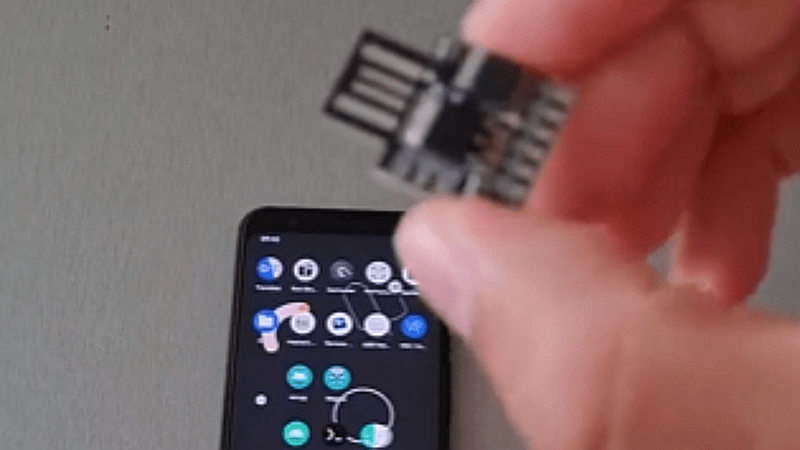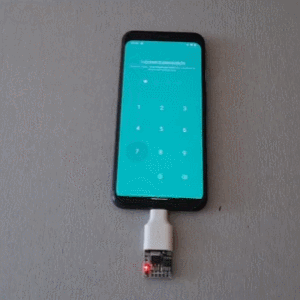
Mobile PINs are a lot like passwords in that there are a number of very common ones, and [Mobile Hacker] has a clever proof of concept that uses a tiny microcontroller development board to emulate a keyboard to test the 20 most common unlock PINs on an Android device.

The project is based on research analyzing the security of 4- and 6-digit smartphone PINs which found some striking similarities between user-chosen unlock codes. While the research is a few years old, user behavior in terms of PIN choice has probably not changed much.
The hardware is not much more than a Digispark board, a small ATtiny85-based board with built-in USB connector, and an adapter. In fact, it has a lot in common with the DIY Rubber Ducky except for being focused on doing a single job.
Once connected to a mobile device, it performs a form of keystroke injection attack, automatically sending keyboard events to input the most common PINs with a delay between each attempt. Assuming the device accepts, trying all twenty codes takes about six minutes.
Disabling OTG connections for a device is one way to prevent this kind of attack, and not configuring a common PIN like ‘1111’ or ‘1234’ is even better. You can see the brute forcing in action in the video, embedded below.
Bruteforcing PIN protection of popular app using $3 ATTINY85 #Arduino
Testing all possible PIN combinations (10,000) would take less than 1,5 hours without getting account locked. It is possible coz, PIN is limited only to 4 digits, without biometrics authentication#rubberducky pic.twitter.com/rbu9Tk3S9d
— Mobile Hacker (@androidmalware2) July 12, 2023
Brute Forcing a Mobile’s PIN Over USB With a $3 Board
Source: Manila Flash Report
0 Comments